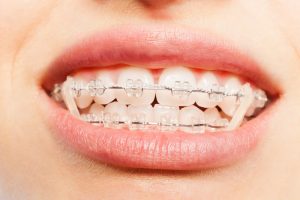Orthodontic elastics, also called rubber bands for braces, are applied to the wire to improve and maintain the alignment of the bite and teeth during the entire treatment process. They apply pressure on specific areas and the orthodontist either loosens or tightens them as he or she sees fit. While the wires are responsible for ensuring the teeth stay in one line, it is the elastics that pull them together.
These elastics are not the same as the little ones you see attached on each bracket. They are small bands that are attached in between the frontal or back brackets or the lower and upper ones. They also come as either latex or non-latex (for people who are allergic).
What Do Orthodontic Elastics Do?
Because of their size, it at first may not appear as though the elastics are able to change the positioning of your teeth. On the contrary, the elastics serve a huge purpose in terms of aligning your bite. This part of getting your braces on takes the longest period of time, but these small bands being applied in exchange for perfectly aligned teeth is well worth it.
An important thing to note about using rubber bands is that it requires the user’s active participation in attaching them and following the doctor’s instructions. This part is crucial. The orthodontic elastics need to be positioned and installed in a specific place and way so that they remain effective. They also need to be replaced from time to time, depending on your dental condition.


